From Work to Home: Nathan Michael Discusses Life Over Coffee
Nathan Michael is a multi-hyphenate, creative entrepreneur who has taken his love for the hospitality industry, and turned it into a career of helping brands tell their unique stories. He does this by guiding them through a process of establishing who they are, what values they can bring to their customers, and how they can build trust through authenticity. We chatted with him about this process, and how he came to create his own creative agency and software platform. On top of this, Nathan tells us about his favorite Chicago spots, and of course, about what coffee gets his creative juices flowing each day.

Tell us more about where you’re located, and what kind of coffee you had this morning!
Over the past 10 years I’ve lived in the heart of Chicago; Wicker Park. It’s a lively neighborhood with a great mix of stylish bars, diverse restaurants, and all-day cafes. Personally, I like mixing up my morning caffeine and trying new roasteries, but my go-to beans and today’s blend comes from Metric Coffee. I love their Big Riff -- a medium roast highlighting flavors of stone fruit, dark chocolate, and citrus.
What are some of your favorite things to do in Chicago during non-pandemic times?
Chicago has a plethora of free, amazing destinations for everyone. Some of my personal favorites are visiting the Garfield Park Conservatory (a nature filled botanical “palace”), walking Lake Shore Drive, and relaxing at Montrose Beach. I also have a laundry list of my favorite hot spots when going out for the day which can be found here.

Your work runs the gamut from design, to photography, to social media strategy! Did one of these elements come before the others?
I started out professionally as a designer, but I’ve always been curious about all forms of art since I was a kid. From music to theatre, interior design to cooking, I’ve really just loved experimenting with different mediums over the years. It’s given me a way to keep life interesting, and also develop as an artist.
How did you first get into helping brands tell their visual stories?
When I first moved to Chicago I stumbled into helping restaurants and bars with their photography, branding, and overall concepting of the brand. It was something that was really fun for me (especially since it usually involved trying the food). I always tried to take a story forward approach to things, giving each brand more context and something that people could relate to. From there, I started to get contacted about more advertising gigs and it pushed me to experiment with other categories. But my first love is the hospitality industry.

What does your own relationship with social media look like, and how does it inform the social media strategy you create with brands?
Most of the time, I think people and brands take social media too seriously. When in reality, it’s a tool that has the opportunity to connect us and allow us to share ideas. Although the industry at large has gone through a lot of iterations, I’ve personally tried to use each platform to create conversations. The reason I became interested in it in the first place was to create meaningful connections. I think if more people focused their energy there, rather than pushing an agenda, it would be a much more enjoyable space. When it comes to working with brands though, my main goal is to help them articulate the value they offer and break it down in daily, lifestyle themes. Offering ideas and ways they can connect with potential customers or brand enthusiasts.

What does the process of creating a social strategy look like?
It’s a little different for each brand, but the main thing to do is start by defining who you are and who you aren’t. It’s important to do both, because each perspective helps define what you should (or shouldn’t) be doing. From there, I like focusing on “themes” and creating categories that content pieces can fit into. For instance, lifestyle content (which should give people easy examples of how to use your product in real life situations) should be different from educational content (how your product was made or interesting facts about what makes you different), etc. The main goal of a strategy is to articulate the value your brand adds to everyday life, while incorporating themes (engaging content that meets your community where they are at). Overall, you want consistency. Because there is no better way to build trust than that.

How do you think this past year has changed the world of social media?
Welp, this could go about 100 different directions :). More than anything, I think this past year has shown everyone the importance of transparency. Regardless of background or political leaning, people desire honest conversations around the things they value. I think that this past year has also shown us that social connections can only take us so far, and that meaningful, interpersonal relationships are what make us thrive.
Why did you decide to create your own agency, LOW RES?
This was a natural progression as I started to receive more work than I could personally fulfill myself. Within the first year of targeting my photography towards social media advertising, I signed McDonalds, American Express, Wendys, and more. I felt like I had a unique perspective to offer brands and a simple solution for creating monthly content. And due to demand, there was an obvious need.

Can you tell us more about your creative collaboration software, Popular Pays? How do the brands you work with use this software?
Popular Pays was a creative venue I started with my two co-founders, Corbett Drummey and Allan Holmes. It’s hard to believe it’s been eight years since its conception, but the platform has evolved to link visual creators with brands in need of fresh content. We tried to simplify the way brands connect with artists (and vice versa). When creating a campaign, a brand can upload a brief to our platform and crowd-source bids, engaging multiple creators, allowing them to collaborate with multiple artists at a time. It’s a great tool for creators as well, because it allows them to work from anywhere and collaborate on multiple projects at the same time.

When you’re not working and creating, what do you like to do with your “days off?”
Simple things, really -- just enjoying time with family and friends. Typically eating and drinking. My wife and I love cooking together, so we’re usually trying out new recipes from a cookbook, or sipping cocktails on our rooftop patio. And of course, getting that daily drip from the Ratio 8. :)
Website: nathanmichael.co
Instagram: nathanmichael
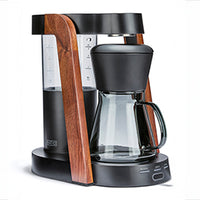 Ratio Eight S2
Ratio Eight S2
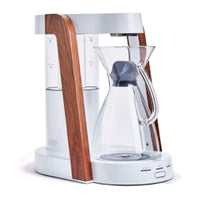 Ratio Eight Original
Ratio Eight Original
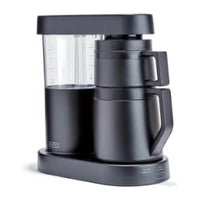 Ratio Six
Ratio Six
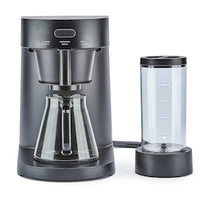 Ratio Four
Ratio Four
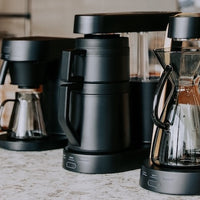 Compare Machines
Compare Machines






